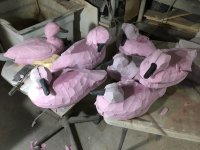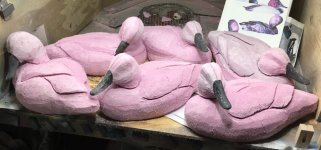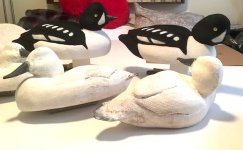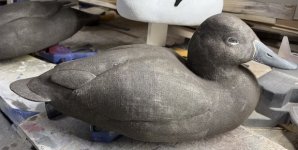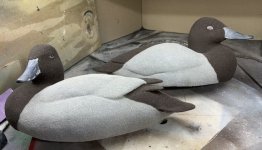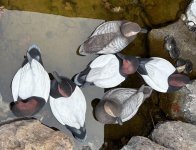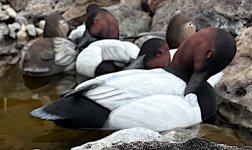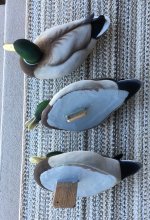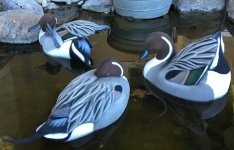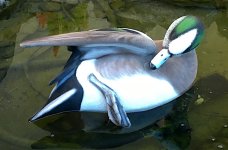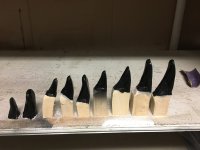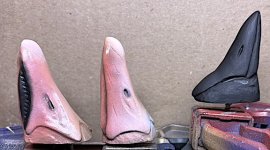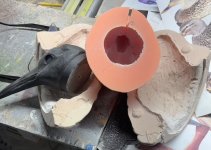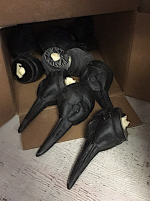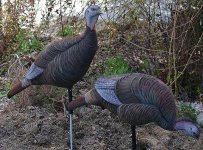Joey, I struggled with bills too, I was sculpting them out of apoxie sculpt at first, but they were never consistent. It started with making cranes, the heads were complicated and time consuming and never consistent. I made the first 100 by sculpting apoxie over the burlapped foam. Then I sculpted a head out of basswood and casted head for the next 500 cranes, it save a lot of time. A few guys get my bills and mold their own and a few just get my bills. If you can come up with a good bill for yourself, they are easy to mold and produce.
Markus, These are burlapped with tile adhesive. That's about the only similarity between my process and other foamer decoys. Though I freely share my process on my facebook page, carved custom foamers are not very well accepted in the decoy world, where I'm still on the outside, but not looking in. The custom carved foamer now is super durable, has the best float of any material and can be done in a wide range of crazy.
Graig, that river keel was one of those "Bob Ross" happy accidents. I wanted to put a swan decoy in front of my wigeon decoys with a wing thang mounted in its back. I took a regular 1" thick piece of composite decking for a keel to counter balance the wing thang. It stuck out the bottom about 6 inches. I dropped the swan in the middle of the wigeons and he proceeded to clear out the wigeon decoys swinging back and forth in the slow current. Then that light bulb appeared over my head. It took a ton of experimentation to figure out the dimensional issues to make the decoy swim every time and I have on pattern for the body and shape, size of the keel itself to make it move correctly every time.I like to have one river keel for every three or four decoys just to make ripples through the spread as well as movement. Another plus is it reduces the weight of the decoy and though I place my decoys rather than throw them, I've never had one turn over in any amount of wind, because of the tie off angle.
Strangely enough I rarely have anyone request a river keel on my decoys. Which is fine, I don't care if they have a dead spread if I'm hunting around them. I've put the river keel on several commercially made decoys with some success, it's just hard to attach to a plastic. At one point I even made a river keel that would slide into the old Higdon mallards detachable keel, but they didn't want it.
View attachment 64083View attachment 64084
